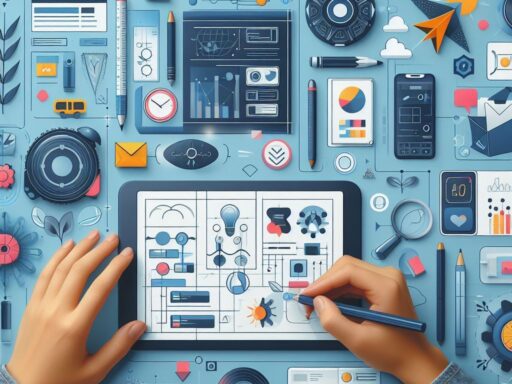Human-computer interaction (HCI) plays a crucial role in driving innovations across various domains. Here are several ways in which HCI impacts innovation:
User-Centered Design:
HCI emphasizes understanding the needs, behaviors, and preferences of users. By incorporating user feedback and usability testing throughout the design process, HCI ensures that innovations are tailored to meet user requirements effectively. This user-centered approach often leads to more intuitive and user-friendly products, fostering adoption and driving innovation.
Improved Accessibility:
HCI focuses on making technology accessible to people of diverse abilities and backgrounds. Innovations in HCI lead to the development of assistive technologies, adaptive interfaces, and inclusive design practices, enabling greater participation and engagement across different user groups.
Enhanced User Experience (UX):
HCI research and practices contribute to enhancing the overall user experience of digital products and services. Innovations such as intuitive interfaces, personalized recommendations, and seamless interactions optimize user engagement and satisfaction, driving continuous improvement and innovation in UX design.
Technological Advancements:
HCI drives innovations in technology by exploring new interaction paradigms, such as touchscreens, gesture recognition, voice interfaces, and augmented reality. These advancements open up new possibilities for interaction design and spur the development of novel applications and experiences, leading to technological breakthroughs and disruptive innovations.
Human-Centered Innovation:
HCI encourages a human-centered approach to innovation, where the focus is on solving real-world problems and meeting human needs. By understanding the context of use and incorporating human factors into the design process, HCI facilitates the creation of innovative solutions that have a meaningful impact on people’s lives.
Iterative Design Process:
HCI promotes an iterative design process that involves prototyping, testing, and refining designs based on user feedback. This iterative approach allows for rapid experimentation and innovation, enabling designers to quickly identify and address usability issues and improve the overall quality of the product or service.
Conclusion:
In summary, human-computer interaction plays a pivotal role in driving innovations by emphasizing user-centered design, improving accessibility, enhancing user experience, fostering technological advancements, promoting cross-disciplinary collaboration, facilitating an iterative design process, and encouraging human-centered innovation. These aspects collectively contribute to the development of innovative products, services, and experiences that meet the evolving needs and expectations of users.






